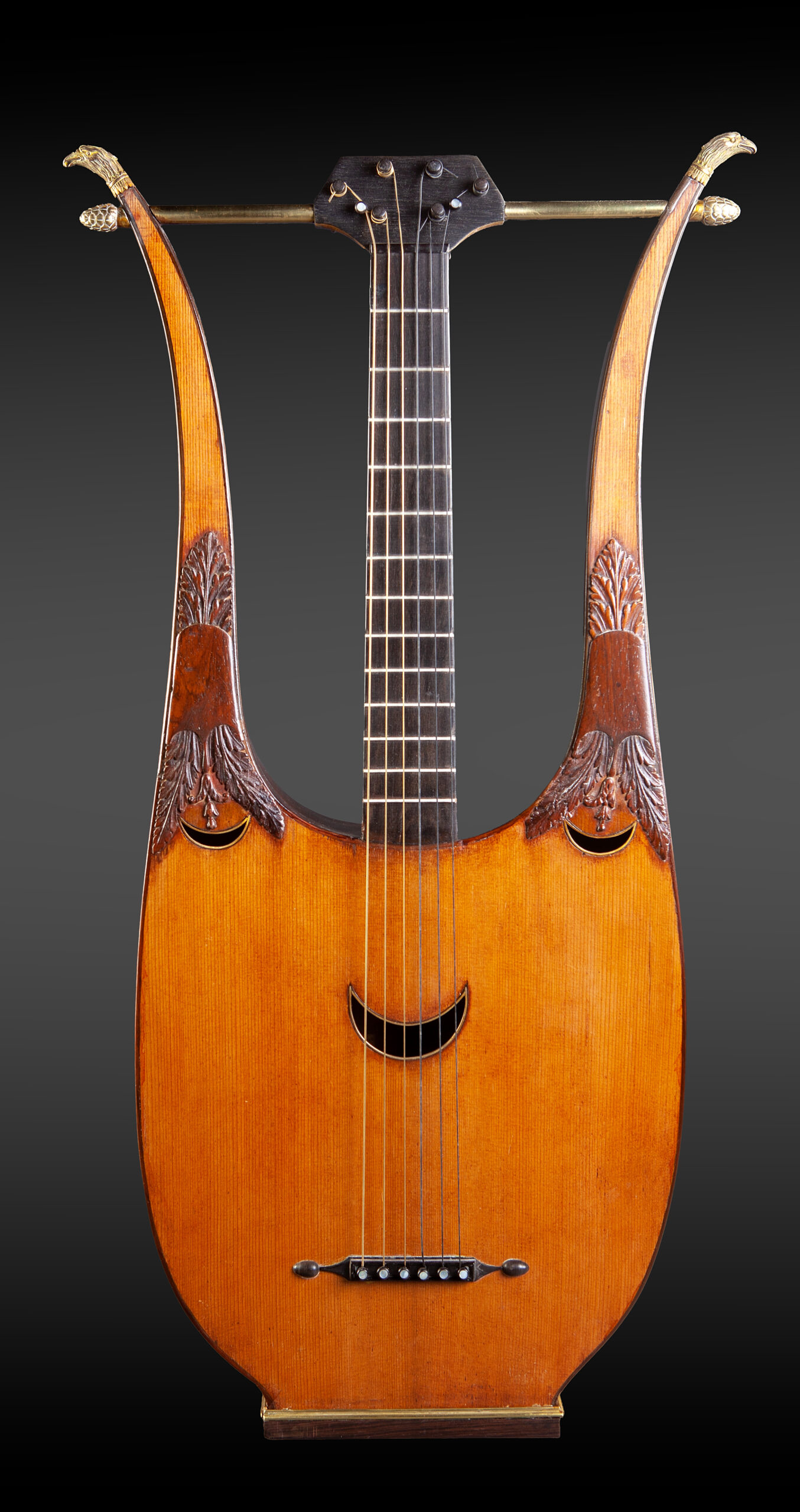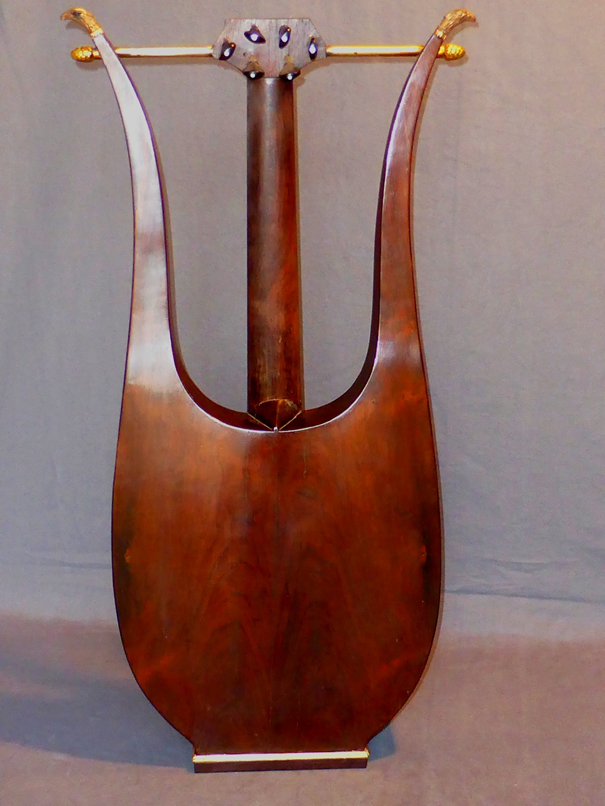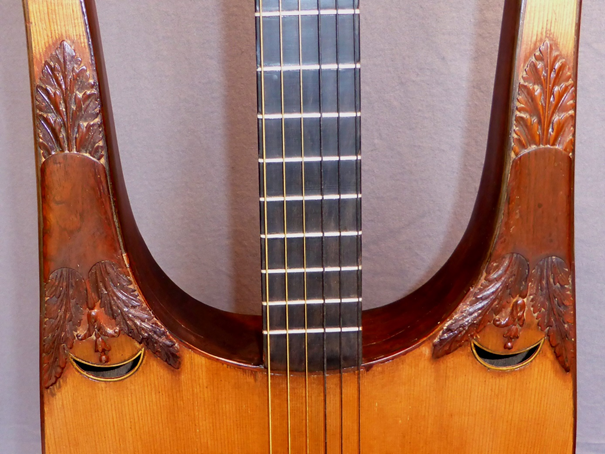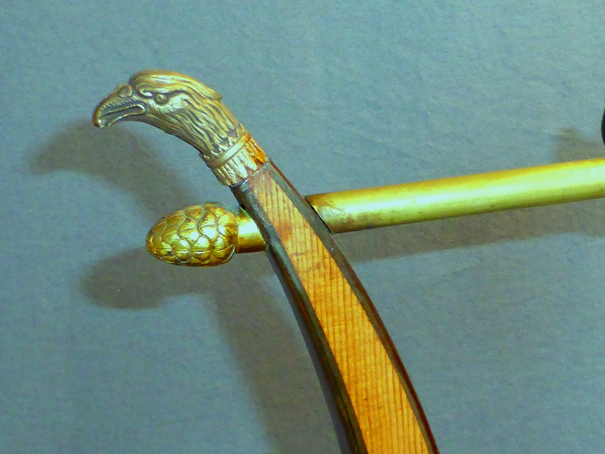GUITAR – LYRE
Parisian work in the style of MARESCHAL. (1765-18..)
Rosewood back and sides.
Spruce top open by three half-moon sound holes and decorated with floral motifs in rosewood.
Both ends of the lyre are surmounted by bronze eagle heads and are connected to the pegbox by two brass axes ending in bronze tassels.
Rosewood terrace bordered by a brass molding.
Illustrating the craze for antiquity and its symbolic objects, the fashion for the guitar-lyre spread through Parisian salons at the end of the 18th century before developing in most European countries. First called “anacreontic lyre” by its inventor, in homage to the Greek poet, the name of lyre, guitar-lyre or lyre-guitar is becoming widespread. Faced with the success of this instrument, especially with ladies, Pierre-Charles Maréchal who claims its paternity publishes a warning entitled: “Plagiarism denounced to musicians and lovers of new lyres invented by Maréchal à Paris”.
Unlike classical models, lyre-guitars rarely bear their maker’s mark, which is why it is difficult to attribute with certainty to Maréchal the example presented here, despite the comparisons that can be made with certain instruments which bear his signature. The shape of the gills and the peg box denotes an Italian influence (Neapolitan school) while the pattern and the proportions remain typical of French aesthetics.
NB: Some fractures have been glued. The missing eagle heads were molded from an original model.
The restoration was carried out by Patrick Arguence in Paris. (“Meilleur ouvrier de France 2005”)
Length: 81cm.
Table width: 34.6cm
Scale: 62.2cm
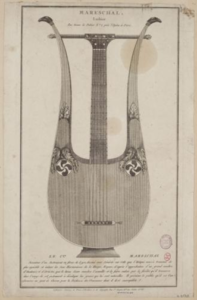 Lettre manuscrite de – “MARESCHAL.” “Luthier” “Rue Neuve le Peltier N° 2 près l’Opéra à Paris.” Conservée au Musée Carnavalet à Paris.
Lettre manuscrite de – “MARESCHAL.” “Luthier” “Rue Neuve le Peltier N° 2 près l’Opéra à Paris.” Conservée au Musée Carnavalet à Paris.
“Le citoyen MARESCHAL.” “Inventeur d’un Instrument en forme de Lyre, dessiné avec Sévérité sur Celle que l’Antique nous a transmis de / plus agréable et imitant les Sons Harmonieux de la Harpe, Espere, d’après l’approbation d’un grand nombre / d’Amateurs, et d’Artistes, que le beau Sexe voudra l’accueillir et le faire valoir par la facilité qu’il trouvera / dans l’usage de cet instrument à déveloper [sic] les graces qui lui sont naturelles. Il préviens le public qu’il se Conformera au gout de Chacun pour la Richesse des Ornemens dont il Est susceptible de faire usage.” Musée Carnavalet, Paris / Legs Amédée Berger, 1881.
_________________________________
Handwritten letter from – “MARESCHAL.” “Luthier” “Rue Neuve le Peltier N° 2 near the Opera in Paris.” Preserved at the Carnavalet Museum in Paris.
“Citizen MARESCHAL.” “Inventor of an Instrument in the form of a Lyre, drawn with Severity on That which the Antiquity transmitted to us from / more pleasant and imitating the Harmonious Sounds of the Harp, Hope, according to the approval of a large number / of Amateurs, and Artists, that the Fair Sex will want to welcome it and promote it by the facility that it will find / in the use of this instrument to develop [sic] the graces which are natural to it. the public that it will conform to everyone’s taste for the richness of the ornaments which it is likely to make use of.” Musée Carnavalet/ Legs Amédée Berger, 1881
